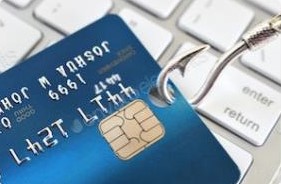Protect Yourself Against Phishing: Essential Tips to Stay Cyber-Safe
June 27, 2023

In the realm of cyber threats, phishing remains one of the most prevalent and effective methods used by cybercriminals to deceive unsuspecting individuals. Phishing attacks can lead to severe consequences, including identity theft, financial loss, and compromised personal information. In this blog post, we will explore what phishing is, how to identify phishing attempts, and provide you with essential tips to protect yourself from falling victim to these malicious schemes.
Understanding Phishing
Phishing is a type of cyber-attack where attackers impersonate legitimate entities, such as banks, social media platforms, or government agencies, to trick individuals into revealing sensitive information like usernames, passwords, credit card details, or personal data. Phishing attacks are typically carried out via email, instant messaging, or fake websites.
Staying Safe
- Be Wary of Suspicious Emails: Phishing emails often have telltale signs. Be cautious if you receive an email that:
- Requests sensitive information: Legitimate organizations will never ask you to provide personal or financial information via email.
- Contains urgent or threatening language: Phishing emails often create a sense of urgency to pressure you into taking immediate action.
- Includes grammatical or spelling errors: Poor grammar and spelling mistakes are common in phishing emails.
- Uses generic greetings: Authentic emails from legitimate organizations typically address you by name, not with generic terms like “Dear Customer.”
- Verify the Sender’s Identity: Check the email address and domain of the sender. Phishers often use email addresses that mimic legitimate entities but contain minor variations or misspellings. Hover your cursor over links (without clicking) to see the actual destination URL. If the URL looks suspicious or unfamiliar, do not click on it.
- Don’t Share Personal Information: Avoid providing personal or financial information via email or on websites you are redirected to from suspicious emails. Legitimate organizations will never ask you to update account details or provide sensitive information through unsecured channels.
- Beware of Urgent Requests: Phishers often create a sense of urgency to manipulate victims into taking immediate action. Be skeptical of emails that claim your account will be suspended, or you will face penalties unless you act immediately. Legitimate organizations typically provide ample notice and communicate through secure channels.
- Use Two-Factor Authentication (2FA): Enable 2FA whenever possible. This adds an extra layer of security by requiring a second form of verification, such as a unique code sent to your phone or generated by an authentication app. Even if attackers obtain your login credentials, they won’t be able to access your accounts without the additional authentication factor. Read more here.
- Be Cautious of Clicking Links or Downloading Attachments: Avoid clicking on links or downloading attachments from suspicious emails or unfamiliar sources. These may contain malware or direct you to fake websites designed to steal your information. When in doubt, independently visit the official website or contact the organization directly to verify the legitimacy of the communication.
- Keep Software Updated: Regularly update your operating system, web browsers, antivirus software, and other applications. Software updates often include security patches that protect against known vulnerabilities used by phishers and other attackers.
- Educate Yourself and Stay Informed: Stay informed about the latest phishing techniques and emerging threats. Regularly educate yourself on how to spot phishing attempts and share this knowledge with friends, family, and colleagues. Awareness is a powerful defense against phishing attacks.
- Report Phishing Attempts: If you receive a phishing email, report it to the appropriate authorities or the organization being impersonated. This helps combat phishing and protects others from falling victim to the same scheme.

Phishing attacks continue to pose a significant threat to individuals and organizations alike. By being vigilant, staying informed, and following these essential tips, you can enhance your cybersecurity and protect yourself from falling victim to phishing attempts. Remember, the key is to question suspicious emails, verify senders, and never share sensitive information without confirming the legitimacy of the request. Stay cyber-safe and keep phishing attempts at bay!
Have Any Question?
Call or email Cocha. We can help with your cybersecurity needs!
- (281) 607-0616
- info@cochatechnology.com




